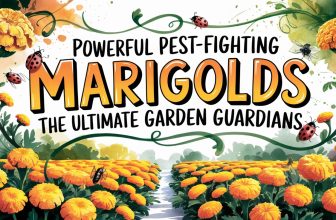Discover the Perfect Shrubs for a Charming Cottage Garden
In the realm of horticulture, the choice of shrubs can significantly influence the allure of a cottage garden, shaping its character and ambiance. The careful selection of shrubs, with their varied hues, textures, and growth habits, can render a garden with an irresistible charm.
From the timeless elegance of lilacs to the vibrant personality of shrub roses, each shrub contributes to the enchanting tapestry of a cottage garden. In this discussion, we will explore a curated selection of shrubs that are renowned for their ability to infuse a cottage garden with a captivating and timeless allure.
Shrub Roses, Lilacs, Forsythia Show Off
Shrub roses, lilacs, and Forsythia Show Off are excellent choices for a cottage garden, offering a delightful array of colors, fragrances, and seasonal blooms. When it comes to pruning techniques for these shrubs, it's essential to prune shrub roses in early spring to remove dead or damaged wood and shape the plant.
For lilacs, prune right after the spring bloom to encourage next year's flowers. Forsythia Show Off should be pruned just after flowering to control its size and shape.
The best companion plants for these shrubs include Illuminati Arch Mockorange and Hydrangea macryophylla, which complement their bloom times and add diversity to the garden. Additionally, Viburnum, Black Lace Elderberry, and Spirea are great companions, providing a stunning contrast and extending the blooming season.
Illuminati Arch Mockorange, Hydrangea Macryophylla
Illuminati Arch Mockorange and Hydrangea macryophylla, as complementary companion plants for shrub roses, lilacs, and Forsythia Show Off, bring additional charm and diversity to the cottage garden with their distinct bloom times and vibrant colors. To ensure the optimal growth of these plants, it's crucial to understand the specific care requirements for each. For Illuminati Arch Mockorange, pruning should be done immediately after blooming to encourage new growth and maintain its elegant shape. This can be achieved by removing one-third of the oldest stems at ground level. Conversely, Hydrangea macryophylla thrives in well-drained, moist soil with a slightly acidic pH. Adding organic matter to the soil can significantly improve its moisture retention and drainage, providing an ideal environment for these stunning shrubs to flourish.
| Aspect | Illuminati Arch Mockorange | Hydrangea Macryophylla |
|---|---|---|
| Pruning Technique | Prune after blooming | Remove one-third of oldest |
| stems at ground level | ||
| Soil Conditions | Well-drained, full sun to | Slightly acidic, well- |
| part sun | drained, moderate moisture |
Viburnum, Black Lace Elderberry, Spirea
Viburnum, Black Lace Elderberry, and Spirea are versatile shrubs that bring a delightful array of colors and textures to the cottage garden landscape.
Viburnum blooms in spring, offering beautiful white flowers, while Black Lace Elderberry showcases its pale pink blooms in early to mid-summer.
Spirea provides versatility with varieties blooming in spring or summer, offering flowers in white, pink, red, and purple. These shrubs thrive in zones 4 to 9, complementing each other in a cottage garden setting.
Advantages of growing these shrubs include their ability to attract pollinators such as bees and butterflies, while some varieties, like Spirea, require little care.
However, it's important to note that certain Spirea varieties may be invasive, requiring research before purchase.
Their differing blooming seasons and low maintenance make them ideal choices for cottage gardens.
Tips for Growing Viburnum
To ensure successful growth of viburnum shrubs in your garden, it is important to carefully consider the soil pH, moisture levels, fertilization schedule, and pruning timing. Viburnums thrive in neutral to slightly acidic soil with moderate moisture. Fertilize once a season and prune immediately after blooming. It is best to plant them in spring for optimal results. Additionally, selecting the best companion plants for viburnum can enhance its growth and overall aesthetic appeal. Some suitable companion plants include shrub roses, lilacs, and spirea. These plants not only complement viburnums visually but also have similar sunlight and soil requirements, making them ideal companions in a garden setting.
| Aspect | Description |
|---|---|
| Soil pH | Neutral to slightly acidic |
| Moisture levels | Moderate |
| Fertilization | Once a season |
| Pruning timing | Immediately after blooming |
| Best companion plants | Shrub roses, Lilacs, Spirea |
Tips for Growing Elderberry
When cultivating elderberry shrubs, it is essential to consider factors such as soil acidity, moisture levels, and pruning techniques to ensure optimal growth and fruit production.
Elderberries thrive in slightly acidic, well-drained soil and tolerate more moisture than most shrubs. It is advisable to mulch the plants to retain soil moisture and provide winter protection.
Pruning elderberry shrubs for shape and size should be done in spring. Additionally, it is crucial to have another elderberry variety nearby for pollination.
Ensuring these best soil conditions and following proper pruning techniques will support the healthy growth and fruit production of elderberry shrubs, making them a valuable addition to a charming cottage garden.
Tips for Growing Spirea
Spirea shrubs, known for their low maintenance and attractive blooms, are an excellent choice for adding beauty and charm to a cottage garden.
When it comes to soil requirements, spirea thrives best in neutral, well-drained soil.
As for pruning techniques, it is advisable to prune spirea after blooming for spring bloomers and in late fall for summer bloomers. This helps in maintaining the desired shape and size of the shrub.
It is important to note that some varieties of spirea may be invasive, so it's recommended to research before making a purchase.
Frequently Asked Questions
Can I Grow Shrub Roses, Lilacs, and Forsythia in Containers on a Balcony or Patio?
Yes, shrub roses, lilacs, and forsythia can be grown in containers on a balcony or patio, provided they receive adequate sunlight and proper care. Consider using large containers and well-draining soil.
Regular watering and fertilization are essential, and pruning may be required to manage growth. Additionally, ensure the containers are suitable for the weight of the mature shrubs.
With proper attention to growing tips and container gardening, these shrubs can enhance balcony decor and patio design.
Are Hydrangea Macryophylla Flowers Edible or Toxic to Pets?
Hydrangea macrophylla flowers are toxic to pets if ingested. Their ingestion can cause vomiting, diarrhea, and in some cases, more severe symptoms. Therefore, it is crucial to ensure pet safety by preventing their access to these flowers.
When used for flower arrangements or garden decor, it's important to keep them out of reach of pets.
Always consult with a veterinarian or a professional before introducing any potentially toxic plants into your home or garden.
Can I Use Black Lace Elderberry Berries for Cooking or Medicinal Purposes?
Black Lace Elderberry berries are not recommended for cooking or medicinal purposes. While elderberries do have potential health benefits, such as boosting the immune system and reducing flu symptoms, they must be cooked before consumption as raw elderberries can cause nausea and digestive issues.
Elderberry syrup, extracted from cooked elderberries, is a popular remedy for colds and flu. It's important to use caution and follow established recipes to ensure safe consumption.
Do Spirea Plants Attract Any Specific Types of Butterflies or Bees?
Spirea plants are known to attract a variety of pollinators, including butterflies and bees, due to their abundant nectar and appealing blooms.
Their vibrant flowers and fragrant scent make them a charming addition to any garden design.
Certain spirea varieties, such as Anthony Waterer and Goldflame, are particularly attractive to butterflies, enhancing the garden with their graceful fluttering and pollinating behavior.
Incorporating spirea in your garden can create a welcoming habitat for these beneficial pollinators.
Are There Any Specific Soil Amendments or Fertilizers That Are Particularly Beneficial for Viburnum Plants?
Soil amendments and fertilizers play a crucial role in promoting the health and growth of viburnum plants. For optimal results, incorporate organic matter like compost or well-rotted manure into the soil. A balanced slow-release fertilizer, formulated for shrubs, can provide essential nutrients.
When cultivating viburnum in balcony gardens, consider using organic fertilizers to support sustainable practices.
Moreover, elderberry benefits include edible flowers, making them a charming addition to cottage gardens.
Conclusion
In conclusion, the selection of shrubs mentioned in this article offers a wide range of colors, shapes, and blooming patterns that can enhance the visual appeal of any cottage garden.
With the right growing conditions and maintenance, these shrubs can thrive and bring a charming and enchanting atmosphere to your outdoor space.
Whether you are an experienced gardener or a beginner, incorporating these delightful shrubs into your garden can help you achieve the quintessential cottage garden aesthetic.
Disclaimer: GardeningNorm is a participant in the Amazon Services LLC Associates Program and may receive a commission if you purchase a product via a link on this page.. However, this does not impact our reviews.Read the full disclosure here.



